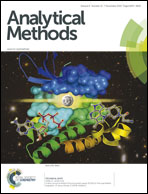A new focus for quality in chemical measurement
Abstract
A sound metrological infrastructure for chemical measurement is a requirement for universal comparability of the results used in international trade. Over the last few decades such a system has been put in place and a corresponding improvement in quality has been evident. But an undue emphasis on traceability and a particular approach to uncertainty have now become counterproductive. Rather than leading to further improvements in the quality of analytical results, these widely-held precepts have distracted analytical chemists from the real problems and progress has stalled. The counter-arguments proposed here are that: (a) broken traceability to the SI is seldom a problem in chemical measurement, both because the metrological infrastructure is very effective and because the applications of analysis seldom demand a relative uncertainty smaller than 1%; (b) the most serious sources of error in analysis usually arise from shortcomings in the chemical preparation of the test solution and matrix mismatch between test solution and calibrators, so cannot meaningfully be attributed to a broken traceability to the SI; (c) the cause-and-effect approach to uncertainty has shortcomings and leads to an ineffectual validation of measurement procedures; (d) properly validated analytical procedures are by definition already fit for purpose, and problems arise only when the analyst deviates from the procedure or when the test materials fall outside its validated scope.


 Please wait while we load your content...
Please wait while we load your content...